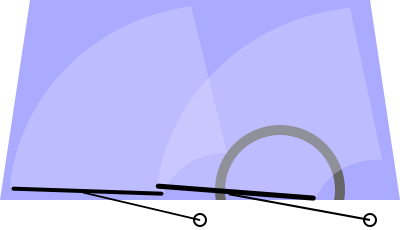Great news. As of December 15, Operation
Iraqi Freedom, otherwise known as the Iraq War, is officially over (we won). Australia
In summary we were in a bad situation back
in 2003 when the whole thing kicked off. Osama bin Laden and his Terrorist Army
were pretty much in charge of everything in North
Africa and the Middle East . Even worse, some
guy on a desk in the CIA had reliably informed us that our former best friend Saddam Hussein
appeared to be making Weapons of Mass Destruction - and not that nerve gas we
said it was OK for him to use on the Kurds, really bad nerve gas this time.
Maybe even nukes.
The situation was simply unacceptable. If
anyone’s going to be killing innocent civilians it’ll be the goddamn Western
Democratic Powers thank you very much. To that end we bombed the bejezus out of
Baghdad
First things first, everyone in any
position of power was a member of Saddam’s evil Ba’ath Party. This wasn’t
because Saddam was a crazy dictator and being in the Ba’ath Party might make it
slightly easier for you to get a job or avoid getting executed for coughing at
an inopportune moment; it was because you were an evil supporter of an evil dictator.
Getting rid of anyone who was a member of the Ba’ath Party gave the new Iraq Baghdad
Second things second, Iraqi Society was a
little too homogenous. Most Iraqis thought of themselves as Iraqis first, then
Muslims. We knew better though, there were Dangerous Sectarian Undercurrents
that could erupt into violence at any moment. To that end we based all
subsequent decisions on the idea that the country was divided amongst Shi’a
Muslims, Sunni Muslims and Kurds. That guy on the desk in the CIA found out that the
Sunnis had been pretty much the big boys under Saddam so they had to be put in
their place. A few years later things were ticking along nicely, political
representation was based along ethno-sectarian lines, ethno-sectarian based
violence was up to nearly 100 incidents per day and Iraq
Next up it was time for the money to start
rolling in. The Iraqi oil industry had some of the best engineers in the
business. They’d managed to keep the show on the road despite bits of
infrastructure being blown up every other day and the sanctions meaning they
had to fix things with string and paperclips. Unfortunately lots of them were
Ba’athists so they had to go. The rest started joining the revived trade unions
that had been illegal under Saddam. That was no good either, as they were all
in favour of keeping the oil under the aegis of the Iraqi State
Things looked bad for a minute when the
neutered remnants of the government couldn’t even pass an oil law so we at
least had some sort of legal recourse if the country ever got uppity about their
economy getting raped. Eventually though everyone settled down and had a good
old fashioned auction. There was plenty of collusion between bidders and plenty
of oil up for grabs so there wasn’t too much competition to put people off. Lots
of companies got the rights to extract lots of oil for the next 20 years*. The
new Iraqi government were really obliging by not insisting on any legal
oversight, not mandating any jobs for Iraqis, and even chucking in some
compensation for all the security the companies would have to hire. Everyone
was happy. Especially the West, as a bunch of private companies ramping up
production on pretty much every oil field in Iraq would certainly be a kick in
the nuts for any production limits OPEC tried to set in the future*.
So, three cheers for us. Another job well
done, and it only cost us 5,123 lives... Oh yeah, there were a few dead Iraqis
too – somewhere between 100,000 and 650,000. It can be hard to keep track when
you’re killing so many people you don’t give a fuck about.
* NB: the war had nothing whatsoever to do with oil.















